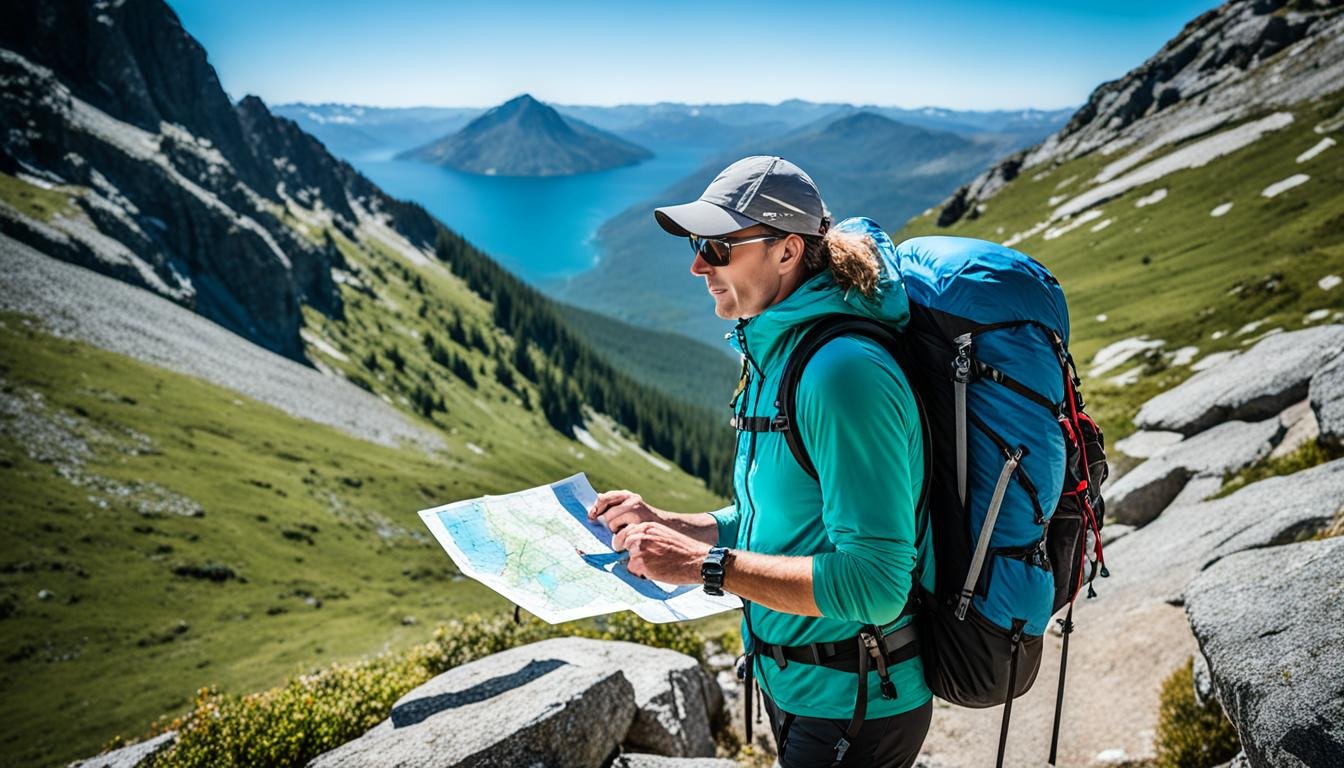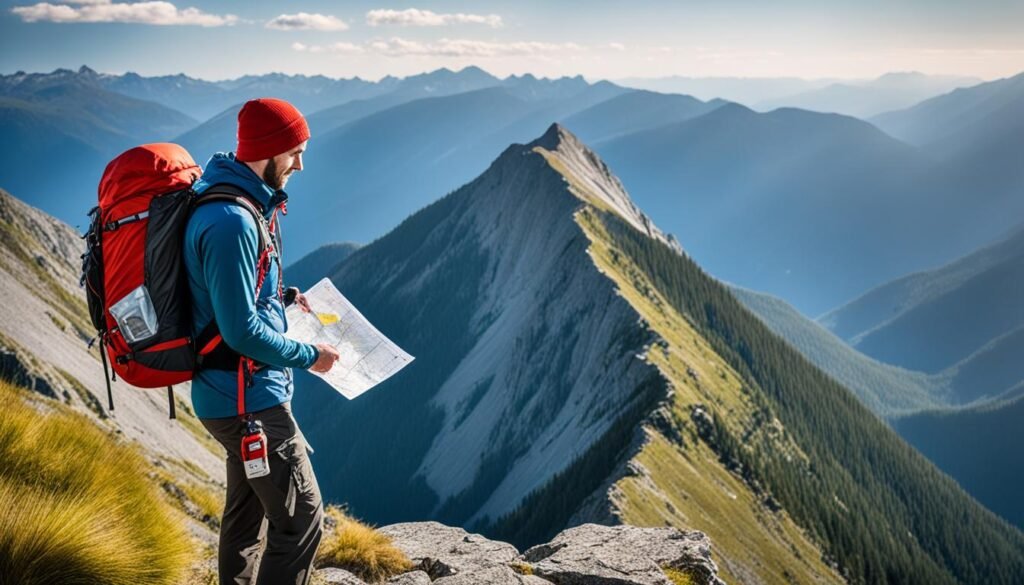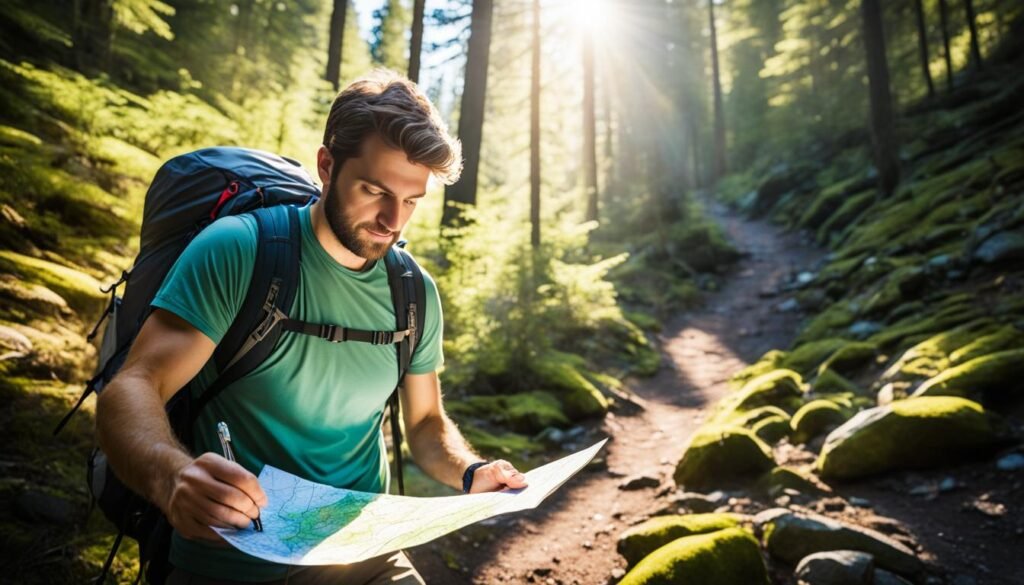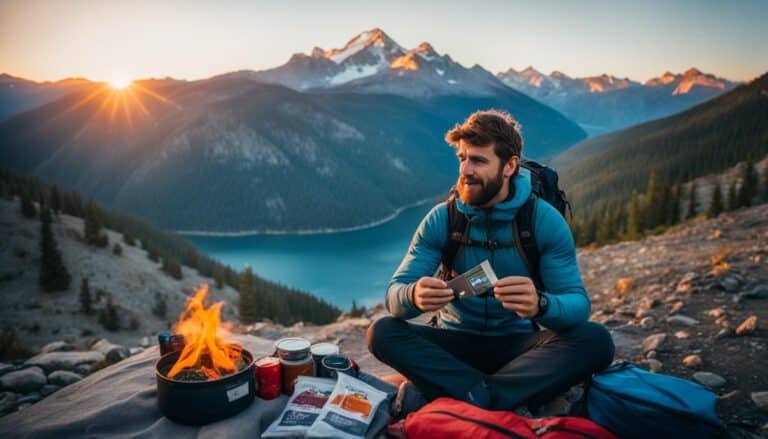Solo Trek Smarts: Safety Tips for Hiking Alone

Ever considered basking in the glory of nature, all by yourself? Setting foot on a trail, exploring the wild, with nobody but you to watch your back and push your limits? While the thought of such an adventure can be thrilling, it simultaneously leaves many with a heightened sense of uncertainty. But what if we said it could be liberating to the extent that even the solo journey to the renowned Subway trail at Zion National Park in 2014 could seem less intimidating? Burgeoning trekkers, brace yourselves as we introduce you to some safety tips for hiking alone and some vital solo hiking safety guidelines. Time to debunk the myth, solo hiking is not just about sheer guts, it is about making informed, practical decisions.
Key Takeaways:
- Embrace the empowerment that comes with hiking alone, at your own pace, and making all the decisions.
- Proper pre-hike preparation and understanding your physical limits ensures a successful and safe solo hiking experience.
- Invest in reliable emergency communication technology like Garmin inReach Mini.
- Mastering trail etiquette and following the Leave No Trace principle guarantees not only your safety but also the safety of the environment.
- Staying weather savvy and always being alert to your surroundings are unparalleled essential solo hiking safety tips that can save the day.
Embracing Solo Hiking: A Leap of Confidence
Warm welcome, dear reader! You’re not alone. Well, on your real journey, you might be alone, physically. We’re talking about solo hiking after all. But metaphorically, we’re right there with you, cheering you on. Embarking on a solo hike can lead to significant personal growth and empowerment – a personal leap of confidence. So, how about a handy guide focusing on hiking solo safety and how to go about staying safe when hiking solo?
Prepare yourself for a transformative experience. Buckle up your hiking boots and immerse yourself in nature as we stroll through these tips for safe solo hiking.
The Empowerment of Hiking Alone
Solo hikes are more than just exploration, more than conquering that challenging trail. It’s a journey of learning through solitude, it’s about basking in the adrenaline and drawing strength from your own decisions. You’re not just another wanderer in the woods, you’re a trailblazer, embracing the freedom of solo hiking.
From the warm head nod of fellow hikers to the uplifting chirp of a hidden bird, there’s a sweetness in these shared moments that remind us of our humanity. Amidst nature’s bountiful landscape, you learn new facets of self-reliance and cultivate unshakeable self-confidence. It’s about you, the trail, and the tales it tells.
Zion National Park Solo: A Case Study in Independence
Real life adventures have a way of etching our growth. Consider a walk down the memory trail of a relentless hiker at Zion National Park. That legendary hiking paradise served as the backdrop to their story of transformation and climbing peaks – both internal and literal ones!
Every step taken, every trail mastered, echoes the power of well-chosen paths and the camaraderie of like-minded trail-treaders. It’s a testament to how solo hikes are an invitation to self-guidance and a chance to experience the trails uninterrupted and in your own rhythm – a lyrical dance between human and nature.
So, hike on, my friend! Uncover your own Zion National Park story, weave your own tale of resilience, and map your journey into the heart of solo hiking.
Pre-Hike Preparation: Keys to a Successful Solo Adventure

No, we’re not suggesting you turn into a paranoid trekker who checks under every leaf for potential safety threats. However, taking calculated measures beforehand will edge you towards staying safe on solo hikes. Consider it the peanut butter to your jelly sandwich of an adventure.
Selection should come into play right from picking your trail. Opt for something familiar, well-marked, and just below your usual difficulty level. This is not the best time to try that vertical cliff you’ve had your eye on, save it for a social hike! Sharing your planned route and expected duration with a trusted friend can be a potential lifesaver. It’s not about handing over your independence but providing a safety net in case you accidentally stumble into the ‘misadventures’ category.
Now let’s talk about personal limits and understanding trail demands. While it might be tempting to exuberantly declare a ‘I can walk 500 miles’ mindset, reality check: you are not in a Proclaimers’ song. Be realistic about your stamina to avoid any unnecessary display of dramatic exhaustion on the trail.
Borrowing a bit of wisdom here from our beloved hiking gear, ‘It’s what you put into that empty backpack that matters’.
Top the list with sufficient food, water, and the appropriate weather gear. Go ahead and cross ‘starvation’ and ‘dehydration’ off your list of potential challenges.
It might be a modern age dilemma to hike while jamming to your favorite tunes, but leave those headphones at home. Acoustic awareness can be your best defense against potential risks in nature’s concert. Now, taking a few precautions doesn’t mean that you have to leave your technology behind. Having a handy means of communication like a Garmin inReach Mini, can serve as an invaluable safety asset.
| Preparation | Description |
|---|---|
| Trail Selection | Pick a familiar, well-marked trail just under your comfort level |
| Share Your Plan | Inform a trusted party about your route and estimated return time |
| Understand Your Limits | Be realistic about your physical capacity to complete the trek |
| Pack Essential Supplies | Food, water, weather-appropriate gear, and communication device |
| No Headphones | Stay aware of your surroundings by leaving your headphones at home |
| Wildlife Awareness | Get familiar with the local fauna and know how to react if you encounter them |
Safety Tips for Hiking Alone: Your Essential Guide

Embarking on a solo hike is not only about exploring on your terms, but it’s also about returning safely. To make sure your adventure doesn’t turn into a misadventure, let’s walk you through the best practices for solo hiking safety.
Choosing the Right Trail: A Primer
Whether you’re a seasoned solo hiker or just getting started, it’s critical to select a trail that matches your skill level. Opt for well-traveled, easy-to-navigate routes for a start. This will help you get comfortable with solo hiking before hitting challenging terrains. Plus, with more fellow hikers around, help is just a shout away if things go south (not that we’re willing it would).
The Importance of Communicating Your Itinerary
Don’t go into the wilderness, leaving the world guessing where you are. Always inform at least one reliable person about your hiking plans, complete with the chosen trail and expected return time. Solo hiking safety guidelines always stress the importance of keeping someone in the loop, should the unforeseen occur. If you’re tech-savvy, get yourself a satellite communicator – handy for sending emergency messages.
Understanding and Respecting Your Limits
We totally get it – pushing limits can be exhilarating. But knowing when to stop is just as crucial. If you feel the trail you’re on is wearing you down or the weather decides to get cranky, remember, there’s no shame in turning back! It’s all part of the adventure and, more importantly, an essential tenet of staying safe while hiking solo.
Lastly, always respect trail markers and let your instincts guide you. Because, let’s face it, nature has a better GPS system than we do.
| Best Practices | Reason |
|---|---|
| Choosing easy-to-navigate, well-travelled trail | Increases safety for beginner solo hikers |
| Informing someone reliable about hiking plans | Ensures someone knows where to look for you in case of emergency |
| Understanding personal limits and respect for weather conditions | Helps prevent exhaustion and exposure to unfavorable weather conditions |
| Respecting trail markers and trusting instincts | Prevents losing one’s way and increases chances of a safe return |
Trail Smarts: Pro Tips for a Safe and Enjoyable Hike
Backpacking solo may feel like trying to nail jello to a tree – a bit tricky and a whole lot wobbly at first. But armed with the right safety tips for hiking alone, it transforms into a grand adventure. It’s just you, some stubborn dirt under your hiking boots, and the call of the wild whispering sweet nothings to your adventurous soul. Let’s get down to the brass tacks of becoming a true trailblazer.
Mastering Trail Etiquette and Leave No Trace Principles
Nothing spoils a good hike like finding a giant pile of trash discarded in nature’s playground. So, first things first – brush up on those Leave no Trace principles (no, it doesn’t involve Harry Potter’s invisibility cloak).
It essentially boils down to showing respect to Mother Nature and your fellow hikers. And no, politely waving to a grizzly bear does not count under ‘respecting fellow hikers’. That’s a whole different safety tip for hiking alone!
Weather Savvy: Planning Around Mother Nature’s Mood
Rain or shine, the journey must go on, right? Wrong! Remember, Mother Nature is a tough cookie. Whether it’s her impressive array of thunderstorms or some sinister-looking clouds making interrupting your journey, it’s essential to stay weather savvy.
Planning your route around expected weather conditions is like updating your GPS (sans the annoying u-turn reminders, of course). It’s always better to tune into the weather whispers rather than getting stuck in a downpour armed only with your puny camping knife – not a good time to test its multifunctional claims, trust us.
Why Keeping Your Ears Open is Essential in the Wild
It’s all about the senses out there in the wilderness. No, we don’t mean smelling the roses or tasting the wild berries (don’t do that!). But yes, keeping your ears open is crucial.
Refining your listening skills isn’t just useful for surviving your family gatherings. When going alone, your ability to pick up potential dangers early by identifying changes in your surroundings can be a lifesaver. Plus, you’d finally get to test the truth of ‘Does a falling tree make a sound when there’s no one around to hear it?’ (Spoiler: it does!).
FAQ
What are some safety tips for hiking alone?
Commence with picking a well-marked and familiar trail, inform someone about your plans, know your physical limits and never surpass them, carry ample food and water, check the weather forecast before leaving, and prioritize alertness by avoiding headphones. It’s also smart to be prepared for potential encounters with wildlife and have a reliable form of communication, such as the Garmin inReach Mini.
How can I stay safe when hiking solo?
Some tips for safe solo hiking include sticking to well-traveled trails, especially for your first solo hike, and avoiding strenuous terrain. Always let a reliable individual know your hiking plans and consider using a satellite communicator for emergencies. Having an adequate supply of food and water, and wearing clothes suitable according to weather conditions, will also ensure your safety.
How do I prepare for a solo hike to ensure a successful adventure?
Preparing for a solo hike requires consideration of several factors: selecting an easy-to-navigate trail, making sure to let someone know about your plans, understanding your physical boundaries, respecting the demands of the trail, having enough food and water, and staying mindful of the weather conditions. Familiarity with trail markers, staying on the marked path, and being guided by your intuition are also relevant for being safe on solo hikes.
What are the best practices for solo hiking safety?
The safety of a solo hiker is paramount. Choosing the correct trail that is both easy to follow and within your comfort level is essential. Informing someone familiar about your detailed hiking plans is another major precaution. Leveraging technology, such as satellite communicators like Garmin inReach Mini, for emergencies can be lifesaving. Understanding your physical capability and knowing when to call it a day is equally important for preventing accidents and injuries.
How can I be safe while enjoying my hike?
To ensure safety while also enjoying your hike, mastering trail etiquette and the Leave No Trace principle plays a large part. Being aware of the current and forthcoming weather conditions helps in planning appropriate clothing and gear. Staying alert is crucial, so consider hiking without headphones to remain in tune with your surroundings. Furthermore, knowing what to do when encountering wildlife, and possibly carrying bear spray, can be a lifesaver, especially in areas where encounters are frequent.









